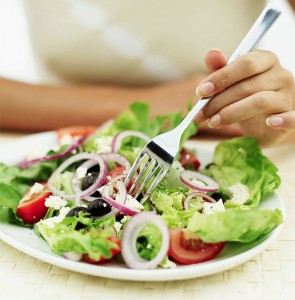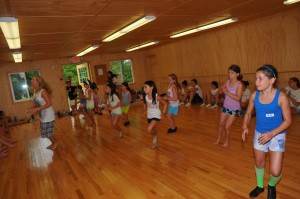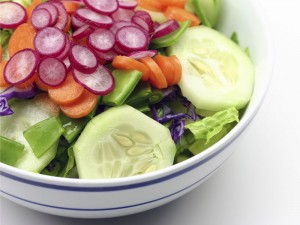 Continuing with our series about camp nutrition, in this blog we will address one of the most common inquiries made by parents who are considering sending their children to summer camp: What will they eat? While the food itself may vary from camp to camp, the strategy behind menu planning is inevitably the same—to provide nutritious meals that also replenish depleted energy levels. One recent critique of summer camp menus is the tendency for them to be heavy on carbohydrates. Admittedly, camp menus are typically carb-loaded. This is not carelessness on behalf of camp menu planners. It’s intentional. Remember that children are much more active at sleepaway camp than they are at home. Most parents have heard their child’s sports coach advise players to eat pasta to boost energy before a big game. The average day at summer camp, however, may involve three or four sports lessons or games, including at least one to two hours of swimming, followed by an evening of fun activities. It’s important that children eat foods that help them maintain stamina and endurance.
Continuing with our series about camp nutrition, in this blog we will address one of the most common inquiries made by parents who are considering sending their children to summer camp: What will they eat? While the food itself may vary from camp to camp, the strategy behind menu planning is inevitably the same—to provide nutritious meals that also replenish depleted energy levels. One recent critique of summer camp menus is the tendency for them to be heavy on carbohydrates. Admittedly, camp menus are typically carb-loaded. This is not carelessness on behalf of camp menu planners. It’s intentional. Remember that children are much more active at sleepaway camp than they are at home. Most parents have heard their child’s sports coach advise players to eat pasta to boost energy before a big game. The average day at summer camp, however, may involve three or four sports lessons or games, including at least one to two hours of swimming, followed by an evening of fun activities. It’s important that children eat foods that help them maintain stamina and endurance.
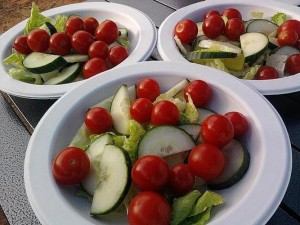 Most camp breakfasts include a hot choice such as breakfast sandwiches, eggs, pancakes, and/or oatmeal. Additionally, there is often a cereal bar daily as well as a fruit, bagel, and yogurt bar. Of course, just like at home, there is the occasional donut treat on special days. Lunch is usually served three to four hours after breakfast and is often the same go-to meals that many children enjoy at home, such as sandwiches, soup, mac and cheese, or pizza. Although items like chips are often offered when sandwiches are served, Camp Starlight now serves only baked chips. Most camps also offer a pretty extensive salad bar at lunch as well. During the afternoon, Camp Starlight has a fruit break during which fruit is distributed. Evening meals follow the conclusion of the regular daily program activities and a break that allows campers and staff to return to their bunks and prepare for evening activities (usually about four hours after lunch). They typically include a protein and a couple of vegetable sides.
Most camp breakfasts include a hot choice such as breakfast sandwiches, eggs, pancakes, and/or oatmeal. Additionally, there is often a cereal bar daily as well as a fruit, bagel, and yogurt bar. Of course, just like at home, there is the occasional donut treat on special days. Lunch is usually served three to four hours after breakfast and is often the same go-to meals that many children enjoy at home, such as sandwiches, soup, mac and cheese, or pizza. Although items like chips are often offered when sandwiches are served, Camp Starlight now serves only baked chips. Most camps also offer a pretty extensive salad bar at lunch as well. During the afternoon, Camp Starlight has a fruit break during which fruit is distributed. Evening meals follow the conclusion of the regular daily program activities and a break that allows campers and staff to return to their bunks and prepare for evening activities (usually about four hours after lunch). They typically include a protein and a couple of vegetable sides.  Most camps also offer the same or slightly larger version of the same salad bar featured at lunch and some camps also offer a vegetarian alternative to meals that feature meat as well some sort of alternative, like a pasta bar, for those staff and campers who tend to be very particular about their food choices. Summer camp dinners also feature a dessert of some type. On some days, it may be jello, fruit, or popsicles. On others, it may be brownies, cookies, or ice cream sundaes. Juice and water are typically available at all meals. Soda is rarely or never offered outside of special areas such as canteens, which are designated places at camp where children can go a few times a week and enjoy a treat, such as a candy bar, a soda, or, if they prefer, a healthier alternative such as a big pretzel. Some Camps also distribute a light snack before bedtime while some make one available throughout the day for those campers whose energy levels run low between meals.
Most camps also offer the same or slightly larger version of the same salad bar featured at lunch and some camps also offer a vegetarian alternative to meals that feature meat as well some sort of alternative, like a pasta bar, for those staff and campers who tend to be very particular about their food choices. Summer camp dinners also feature a dessert of some type. On some days, it may be jello, fruit, or popsicles. On others, it may be brownies, cookies, or ice cream sundaes. Juice and water are typically available at all meals. Soda is rarely or never offered outside of special areas such as canteens, which are designated places at camp where children can go a few times a week and enjoy a treat, such as a candy bar, a soda, or, if they prefer, a healthier alternative such as a big pretzel. Some Camps also distribute a light snack before bedtime while some make one available throughout the day for those campers whose energy levels run low between meals.
Weekly cookouts are as big of a tradition at Camp Starlight as campfires and sing alongs. Cookouts usually consist of standard backyard 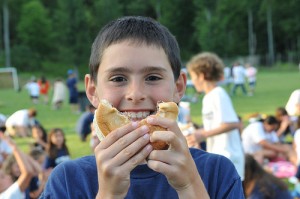 barbeque fare—hot dogs, hamburgers, watermelon, and a potato offering of some sort (or baked chips). Just like at home, food for cookout is prepared on a grill. The hot dogs and hamburgers are not fried in oil.
barbeque fare—hot dogs, hamburgers, watermelon, and a potato offering of some sort (or baked chips). Just like at home, food for cookout is prepared on a grill. The hot dogs and hamburgers are not fried in oil.
One aspect of eating as summer camp that is missing from most campers’ home lives is the opportunity for constant grazing. At summer camp, with the exception of designated fruit and snack breaks, children eat at mealtimes. The dangerous combination of boredom mixed with a kitchen in close proximity is removed. Camp Starlight does not specifically limit portions or helpings but we do discourage campers from unnecessarily wasting food by attempting to eat more than their stomachs can comfortably handle.
Most parents, as one may conclude after reading about what’s in a camp meal, are pleasantly surprised by camp meal offerings. Some even find that their children’s eating habits actually improve because of summer camp. The point to remember, however, is that regardless of which foods are served, almost all summer camps carefully plan menus in consideration of activity levels, appeal, schedule, and nutrition. Decisions concerning summer camp meals are never random but always with healthy habits in mind.





